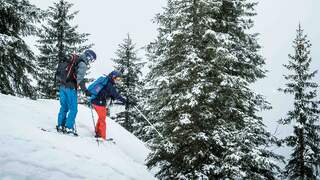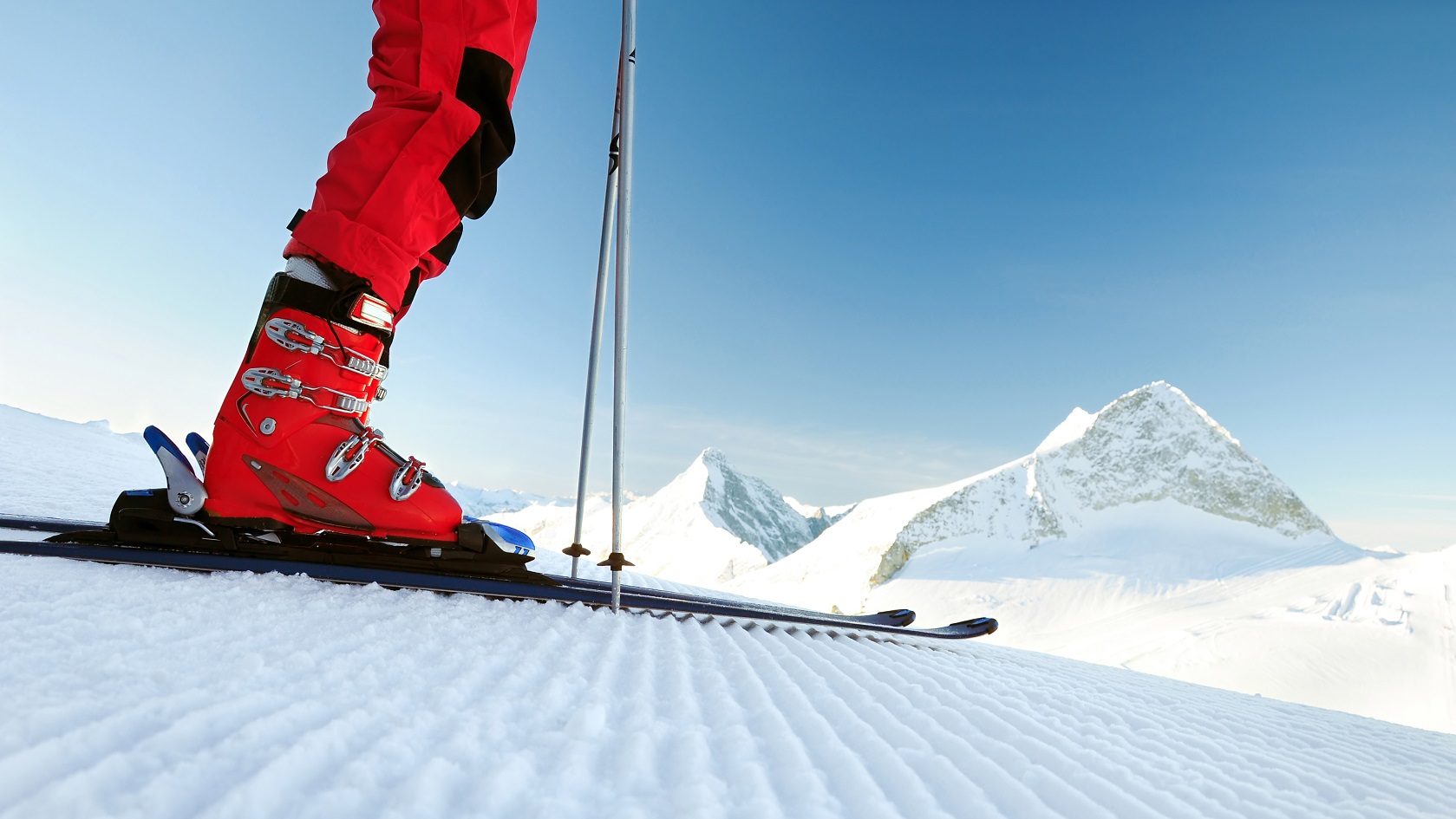HOW TO BUY THE BEST ALPINE TOURING SKIS
Choosing the right alpine touring skis can be tricky. Here's everything you need to know before you buy:
Whether it’s the lure of fresh tracks, fewer people, or the risk and responsibility, alpine touring (also known as randonnée) is increasing in popularity. If you’re a skier making the jump to backcountry or alpine touring your skis are as important as ever.
You’ll be spending about 90% of your time going up the mountain under your own power, and the 10% downhill time will be in variable conditions and terrain, so it’s important you choose the right planks. The best alpine touring skis are those that you feel most comfortable with for the terrain and type of snow you’ll be riding on. These might be your usual lift-served skis but with alpine touring bindings and climbing skins, or a separate AT specific pair altogether.
Our stores have a wide range of ski bindings, so if in doubt, visit us in store and get expert advice from our knowledgeable staff.
Finding the Right AT Skis
You need to find a good balance between uphill performance, either with climbing skins or hiking with your skis on your pack, and downhill performance.
AT-Specific Skis
In theory you can use any ski for alpine touring however more and more brands are developing touring-specific skis with lighter constructions and shapes suited to the variable backcountry terrain.
Always consider which type of climbing skins you want to use with your skis as some AT-specific skis have cutouts or holes in the tips and tails designed for your skin system. Other AT-specific skis are made from the same moulds as the brand’s alpine skis, but with a lighter core and without an additional metal or laminated layer to save weight.
If possible, try before you buy.
Wide or Narrow Skis?
Narrow and light skis are brilliant for the climb, sadly, where you’ll be spending most of your day. Wider and heavy skis are ideal for downhill, especially handling speed and difficult terrain in soft or deep snow. But don’t forget to factor in the weight of your AT ski boots and bindings.
Rocker
Many alpine touring skiers prefer a rocker or early rise in the tip, making it easier to both ski and skin in fresh snow. A rocker in the tail can add manoeuvrability in steep terrain but can make attaching skins more difficult so it’s usually again down to personal preference.

Weight Class
When choosing alpine touring skis, weight class is a crucial factor that affects both your uphill efficiency and downhill performance. Skis generally fall into three main categories:
- Ultralight
- Standard weight
- Heavy
Here’s how each class breaks down:
ULTRALIGHT
- Typically weigh under 2.7kg per pair
- Ideal for those prioritising easy ascents and minimal weight on the climb
- Often constructed with advanced materials like carbon fibre for enhanced performance
- Best suited for long tours or when every gram counts
STANDARD WEIGHT
- Usually range between 2.7kg and 3.4kg per pair
- Offer a balanced compromise between uphill agility and downhill stability
- A popular choice for skiers seeking versatility in various conditions
HEAVY
- Generally 4kg or more per pair
- Provide robust downhill performance but are less ideal for backcountry touring due to their weight
- More common in traditional alpine skiing than in touring setups
Lighter skis are easier to carry uphill but may sacrifice some downhill performance, while heavier skis excel on descents but can be a burden on the climb. Consider your skiing style and priorities when choosing the right weight class for your alpine touring skis.
Alpine Touring Skis FAQs
Alpine touring skis are designed for both uphill and downhill travel in the backcountry. They’re lighter than regular alpine skis and used with special bindings that allow your heel to lift for climbing and lock down for descents, making them ideal for exploring off-piste terrain.
For beginners, medium-width touring skis offer a good balance - narrower skis are lighter for climbing but harder to control downhill, while wider skis provide more stability but can be heavy. Renting before buying lets you test what works best for your needs.
In addition to skis and touring bindings, you’ll need climbing skins, touring boots, adjustable ski poles, and avalanche safety gear (transceiver, probe, shovel). Lightweight gear is key for easier uphill travel and a more enjoyable day out.
The best time for alpine touring in the Alps is typically mid-March to mid-April, when snow conditions are stable, daylight hours are longer, and avalanche risk is generally lower. Always check local avalanche forecasts before heading out.
Ski touring can be safe for beginners if you start with gentle routes, go with an experienced partner or guide, and take avalanche safety training. Never tour alone, and always carry essential safety equipment and know how to use it.
Related Articles

Let us know you agree to cookies
We use marketing, analytical and functional cookies as well as similar technologies to give you the best experience. Third parties, including social media platforms, often place tracking cookies on our site to show you personalised adverts outside of our website.
We store your cookie preferences for two years and you can edit your preferences via ‘manage cookies’ or through the cookie policy at the bottom of every page. For more information, please see our cookie policy.



